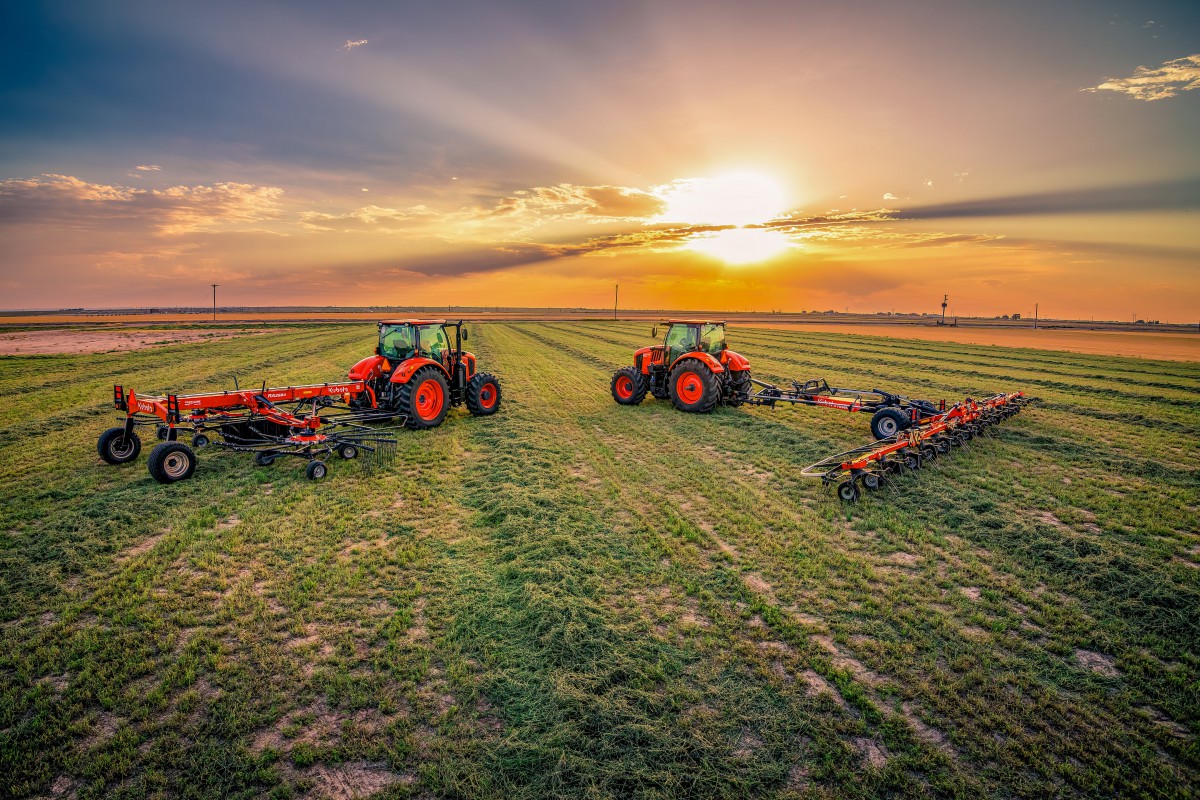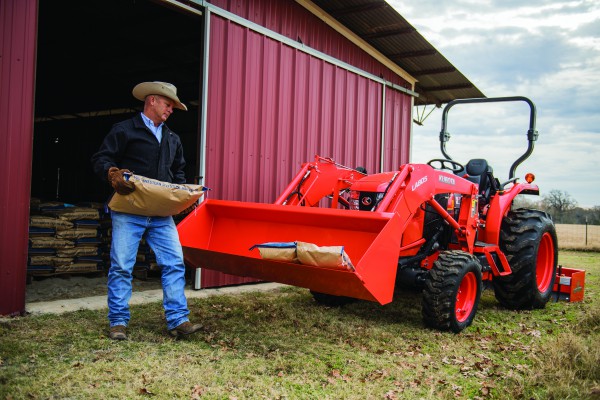
Every efficient hay producer prioritizes selecting the right hay equipment. High-quality tools ensure optimal performance, while improper choices lead to productivity delays, poor forage quality, and increased costs.
Whether you’re a small-scale farmer growing hay for livestock or a commercial operation selling bales wholesale, the right hay equipment enhances harvesting, drying, and preservation, boosting farm efficiency.
Evaluating Your Farm's Requirements
Assessing your farm’s needs before investing in hay equipment ensures it meets your specific requirements.
Farms vary widely, so understanding factors like acreage, forage type, and climate is crucial for selecting the right tools to enhance farm efficiency. Here are key considerations:
1. Farm and Hay Volume
The scale of your farm and hay production dictates equipment needs. Small farms (under 50 acres) may suffice with basic tools like a small square baler and mower, while larger farms (hundreds or thousands of acres) require advanced options like disc mowers and large round balers.
Small Farms
For a farm under 50 acres producing hay for personal use, a sickle bar mower, small square baler, and simple rake are adequate. Some tasks can be manual or use a small tractor.
Medium Farms
Farms of 50 to 200 acres need disc mowers, wheel rakes, and balers, choosing round or square bales based on storage and transport preferences.
Large Farms
Farms over 200 acres focus on profitability through high efficiency, requiring self-propelled mowers, rotary rakes, and large balers.
2. Kind of Hay and Forage Crops
Different hay equipment performs best with specific forage types. Matching equipment to your crops prevents quality and nutrient loss.
For fine-stemmed crops like alfalfa, preserving tender leaves is key. A disc mower with a conditioner speeds drying while retaining leaves, optimizing nutritional value.
3. The Local Environment
Climate affects hay equipment effectiveness. The right tools mitigate weather challenges.
Wet and Humid Weather
In humid regions, drying hay is challenging, risking spoilage. Equipment like mower-conditioners (cutting and crimping in one pass), tedders (spreading for airflow), and bale wrappers (for baleage in wet conditions) reduce drying time and preserve quality.
Dry and Arid Climates
In dry areas, hay dries quickly without conditioning, but brittleness can increase leaf loss. Standard disc mowers and gentle rakes (rotary or belt-driven) minimize shattering, while tarps or barns prevent sun bleaching.
Variable Climate Conditions
Unpredictable weather demands flexibility. Adjustable mower-conditioners, multi-purpose tedders/rakes, and balers with moisture sensors adapt to changing conditions, ensuring farm efficiency.
Key Features to Look for in Hay Equipment
When choosing hay equipment, prioritize features that enhance ease of use, efficiency, durability, and functionality to improve farm efficiency, reduce costs, and maintain forage quality.
Mower Features: Choosing the Right Cutter for Your Farm
Mowers kick off hay harvesting, impacting quality and speed.
-
Cutting Width: Wider widths reduce passes, saving time and fuel.
-
Cutterbar Design: Low-profile cutterbars ensure close, even cuts, minimizing loss.
-
Blade Type: Sickle bar mowers suit small farms but require more maintenance; disc mowers are durable for tougher conditions.
-
Durability and Maintenance: Reinforced gearboxes and replaceable blades extend lifespan and simplify repairs.
Rotary mowers excel for large-scale, thick-stemmed crops.
Mower-Conditioner Features: Speeding Up Drying Time
Mower-conditioners cut and crimp hay to hasten drying.
-
Conditioning Rollers: Rubber rollers preserve leafy crops like alfalfa; steel rollers suit thicker grasses.
-
Adjustable Settings: Customize pressure for perfect cuts based on forage type.
-
Flotation System: Smooth gliding over rough terrain prevents soil contamination.
Essential in wet climates, these save significant time.
Rake Features: Creating Efficient Windrows
Rakes form windrows for baling efficiency.
-
Wheel Rakes: Affordable and low-maintenance, though less gentle on crops.
-
Rotary Rakes: Costlier but gentler, producing uniform windrows with minimal contamination.
-
Parallel Bar Rakes: Ensure high-quality drying and uniformity.
Rotary and parallel bar rakes prioritize quality over cost.
Tedder Features: Improving Hay Drying
Tedders fluff hay for better air circulation and faster drying.
-
Adjustable Tine Angle: Steeper angles speed drying but may increase leaf loss.
-
Corrosion-Resistant Tines: Enhance durability for frequent use.
Vital in rainy areas to accelerate drying.
Baler Features: Picking the Right Baling System
Balers suit different farm sizes and storage needs.
-
Small Square Balers: Ideal for small farms with manual handling.
-
Round Balers: Efficient for large operations, producing compact, transportable bales.
-
Large Square Balers: Best for commercial stacking and storage.
High-capacity balers thrive in varied conditions, boosting profitability.
Techniques for Increasing the Lifespan of Your Equipment
Choosing high-quality hay equipment is just the start; proper care extends its lifespan and enhances farm efficiency. Here are key techniques:
1. Follow the Manufacturer's Maintenance Guidelines
Operator manuals detail care, maintenance, and replacement schedules to prevent unexpected failures. Regular lubrication at grease points mitigates wear.
Maintenance Schedule
|
Equipment Type |
Daily Checks |
Weekly Tasks |
Monthly Maintenance |
Seasonal Preparation |
|
Mower-Conditioner |
Check blades, lubricate joints |
Inspect belts, clean debris |
Sharpen blades, check hydraulics |
Replace worn parts, test operation |
|
Rake & Tedder |
Look for bent tines, tighten bolts |
Check gear lubrication |
Inspect frame for cracks |
Grease all moving parts |
|
Baler |
Inspect pickup teeth, clear debris |
Test knotters/twisters |
Replace worn belts, check bearings |
Store in dry place, inspect chains |
|
Tractor & Attachments |
Check fluid levels, tire pressure |
Grease moving joints |
Change oil, inspect hoses |
Service PTO shaft, replace parts |
2. Cleaning All Equipment After Every Use
Hay, dust, and debris can trap in machinery, causing rust and performance issues. Use air compressors to remove particles and wash off plant material and mud to prevent corrosion.
3. Proper Storage of Farm Equipment
Unprotected hay equipment suffers weather damage, shortening its life. Store tools in a dry barn or under tarps to shield from rain, snow, and sun exposure.
4. Check for Damages in Equipment Before Usage
Pre-use inspections save time and repair costs. Check bolts, hydraulic hoses for leaks, and moving parts for functionality. Ensure blades and tines are sharp to avoid breakdowns during peak seasons.
5. Use OEM Or Aftermarket Parts To Ensure Reliability
Cheap, low-quality parts compromise performance. Use OEM or compatible aftermarket parts matching Kubota specs to maintain reliability and prevent leaks or failures.
6. Modify the Equipment's Controls Depending on the Field Conditions
Adjust settings based on crop type and field conditions. Set mower height to protect cutterbars and tweak rake width for even windrows, enhancing equipment longevity.
Secret to Durable, High-Performing Hay Equipment

Selecting the right hay equipment demands careful consideration to maximize farm efficiency and profitability.
Understanding your farm’s needs ensures you choose durable, easy-to-maintain tools that protect your investment. Proper maintenance, storage, and operator training are vital for long-term equipment longevity.
Ready to upgrade your hay equipment? Contact H&R Agri-Power for expert advice and competitive prices to enhance your hay production!

